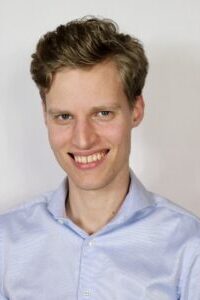Robin Conradi
CO and CO2 hydrogenation catalysis is a promising pathway for transforming waste streams into valuable chemical building blocks. These waste streams, originating from steel manufacturing industries and agricultural and municipal waste processing, also contain nitrogen-, sulfur-, and phosphorous species, which can influence the catalytic performance of the Co/TiO2 Fisher-Tropsch (FTS) catalyst. These species could migrate into the catalyst particle to form metal carbides, metal oxides, metal sulfides, metal nitride, and metal phosphide alloys.
This project aims to quantify and adequately understand the effect of these critical gas-phase “impurities” in the FTS catalytic system. Using an array of operando and in-situ spectroscopic techniques, we could disentangle the different surface and bulk Co-C/O/N/S/P contributions in the CO and CO2 hydrogenation process. This approach could lay the foundation for making these catalytic systems more robust against the different gas-phase contaminants that are present in more renewable carbon resources, such as agricultural and municipal waste.

